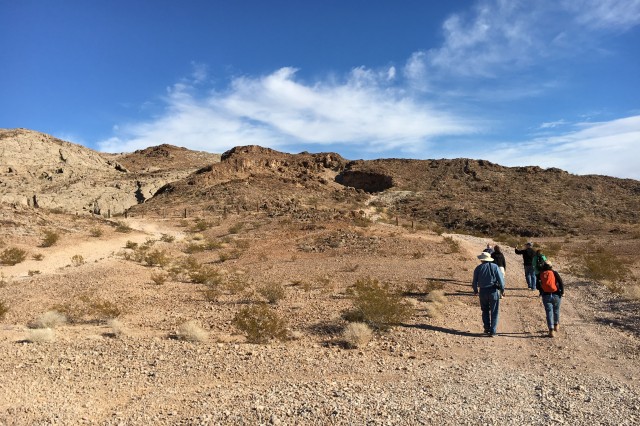Vertebrate Paleontology

Vertebrate Paleontology is the study of ancient animals that have a vertebral column including fish, amphibians, reptiles, birds, and mammals. Vertebrate paleontologists are best known for their work with fossils. Our department has grown from housing the fossils recovered from the asphalt seeps of Rancho La Brea during the early 20th century to include a wide diversity of specimens amassed over the years by means of both active excavations and generous donations. Our collection is the fifth largest in the nation and a research standard for universities and colleges in the Southern California region.
The Vertebrate Paleontology Department is responsible for many of the Natural History Museums of Los Angeles County's (NHMLAC) exhibits that feature fossils and ancient animal remains. Our department provides the backbone of the Age of Mammals exhibit, currently on display. However, our collection doesn’t end there. Upstairs, our cabinets house over 150,000 fossil vertebrate specimens of all shapes and sizes including representatives of every major group of vertebrates from around the world and spanning in age from the Ordovician to the late Pleistocene. This extensive collection is an invaluable scientific resource and can be viewed, in part, online but also via special appointment for intensive research purposes.
RESEARCH
Having access to such a rich collection of resources, our department's research staff is able to simultaneously commit to several different areas of study. The various fields we are able to pursue provide us a deeper understanding of our specimens—and subsequently the history of vertebrate life on our planet—knowledge for us to share with you. As of now, our staff is focusing on:
- Systematics of fossil marine mammals
- Terrestrial carnivores
- The Late Pleistocene
Utilizing the breadth of our collections, our associates from around the world pursue research topics of their own. These most recently include:
- Fossil history of the Amazon Basin
- Systematics of fossil sea birds and billfish
- Paleogeology of the Pacific Northwest
- The Cenozoic fossil vertebrates of Nevada
RESOURCES
Rancho La Brea The largest single collection of Ice Age vertebrate fossils in the world.
Society of Vertebrate Paleontology The Society of Vertebrate Paleontology is a world-wide organization of vertebrate paleontologists and all those interested in fossil vertebrates. Visit them at .
University of California Museum of Paleontology Covering the entire range of fossil organisms the University of California Museum of Paleontology provides a wide range of educational materials on the history of life on Earth.
Search our Collections
We have over 150,000 catalogued specimens of fossil vertebrates, ranging in size from the tiny teeth of fish, bats, shrews, and rodents, to large whales. Our collections are primarily from California, the southwestern portion of the United States, and the northwestern portion of Mexico. They include representatives of every class of fossil vertebrates, but fossil mammals from the Cenozoic (the last 65 million years) form the bulk of the collections. Because of the extensive exposures of marine rocks in Southern California, our collections also include large and diverse holdings of fishes, sharks, whales, pinnipeds, and other marine vertebrates.
Explore our collections by clicking on this Collections Search Form.
View 3D photogrammetry models of VP holotypes on Sketchfab.
Our Staff
CONTACT US
Dr. Samuel A. McLeod
Collections Manager
smcleod@nhm.org
213.763.3325

